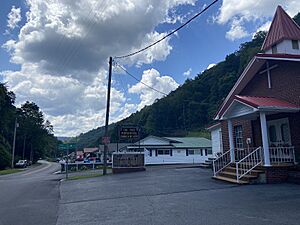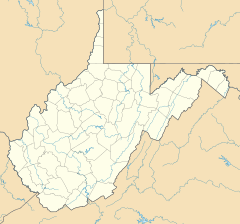Hinch, West Virginia facts for kids
Quick facts for kids
Hinch
|
|
|---|---|
 |
|
| Country | United States |
| State | West Virginia |
| County | Mingo |
| Elevation | 1,230 ft (370 m) |
| Time zone | UTC-5 (Eastern (EST)) |
| • Summer (DST) | UTC-4 (EDT) |
| GNIS ID | 1540309 |
Hinch is a small place located in Mingo County, West Virginia, in the United States. It is known as an unincorporated community. This means it's a group of homes or buildings that isn't officially part of a city or town. Instead, it's governed by the county.
Contents
Exploring Hinch's Location and Surroundings
Hinch is nestled in the beautiful Appalachian Mountains. This area is famous for its green hills and winding rivers. It's a quiet spot, perfect for enjoying nature.
Where is Hinch in West Virginia?
Hinch is found in the southwestern part of West Virginia. It's part of Mingo County. This county is known for its rich history, especially related to coal mining.
Understanding Unincorporated Communities
An unincorporated community like Hinch doesn't have its own local government, like a mayor or city council. Instead, services like roads and schools are managed by the county government. This is common in many rural areas across the United States.
Life in an Unincorporated Area
Life in an unincorporated community can be very peaceful. People often know their neighbors well. These areas usually have fewer people than big cities. They might have a few local businesses, like a general store or a small church.
Geography and Natural Features of Hinch
The land around Hinch is quite hilly. It sits at an elevation of about 1,230 feet (375 meters) above sea level. This elevation gives it a cooler climate than lower areas.
Climate and Weather Patterns
Hinch experiences all four seasons. Summers are warm and humid, while winters are cold with some snow. Spring and autumn bring mild temperatures and beautiful changes in nature.
Local Flora and Fauna
The area around Hinch is home to many types of plants and animals. You might see deer, squirrels, and various birds. The forests are filled with oak, maple, and pine trees.
Images for kids




